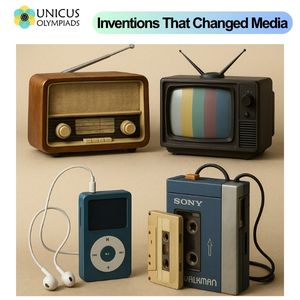

The invention of radio, television, and MP3 players revolutionized the way people access and consume media. Each invention transformed communication, entertainment, and information-sharing, reshaping the media landscape and societal norms. Below are detailed accounts of each invention, the inventors behind them, and their lasting impact on media, alongside related inventions that further enhanced media consumption.
The radio was one of the first technologies that allowed mass communication over long distances, broadcasting both voice and music to a broad audience.

Television combined both audio and visual components, enabling the transmission of moving images and sound to millions of viewers. It expanded the possibilities for storytelling, education, and news coverage.
MP3 players revolutionized the way people consumed music, moving from physical media like vinyl records and CDs to digital formats that allowed users to store thousands of songs on a portable device.
The cassette tape allowed people to record and listen to music, enabling the personal sharing of music and the rise of mixtapes.
Developed by Sony, the Walkman was the first portable music player, allowing people to listen to music on-the-go.